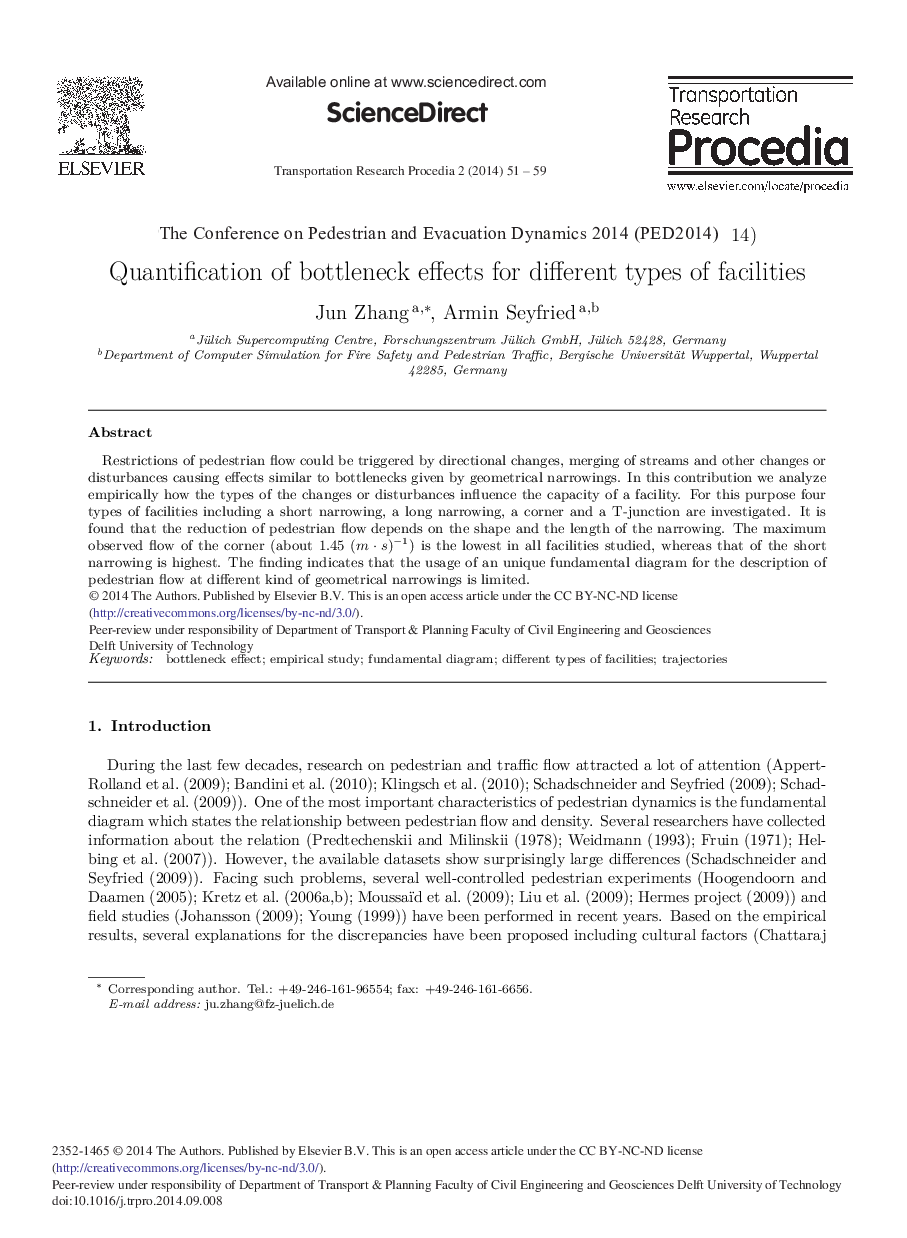| Article ID | Journal | Published Year | Pages | File Type |
|---|---|---|---|---|
| 1106665 | Transportation Research Procedia | 2014 | 9 Pages |
Restrictions of pedestrian flow could be triggered by directional changes, merging of streams and other changes or disturbances causing effects similar to bottlenecks given by geometrical narrowings. In this contribution we analyze empirically how the types of the changes or disturbances influence the capacity of a facility. For this purpose four types of facilities including a short narrowing, a long narrowing, a corner and a T-junction are investigated. It is found that the reduction of pedestrian flow depends on the shape and the length of the narrowing. The maximum observed flow of the corner (about 1.45 (m s)-1) is the lowest in all facilities studied, whereas that of the short narrowing is highest. The finding indicates that the usage of an unique fundamental diagram for the description of pedestrian flow at different kind of geometrical narrowings is limited.
